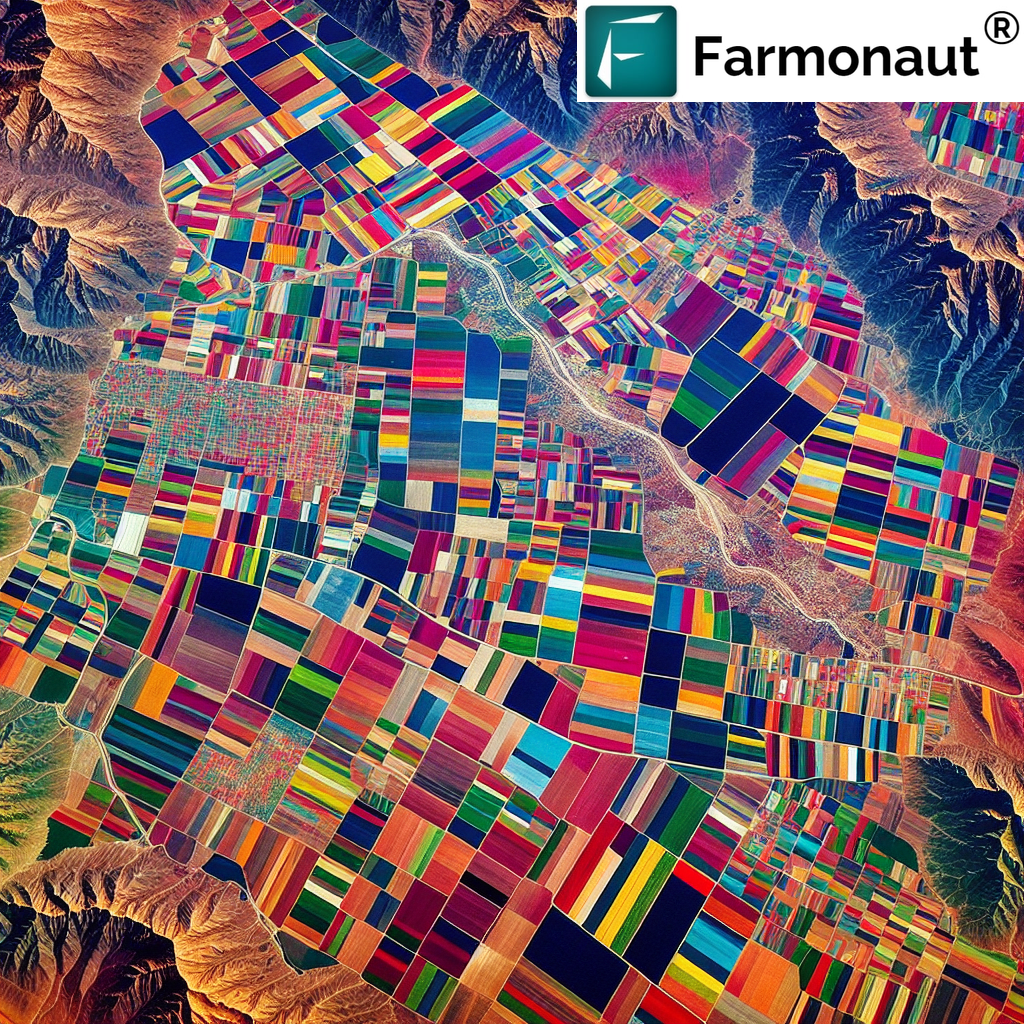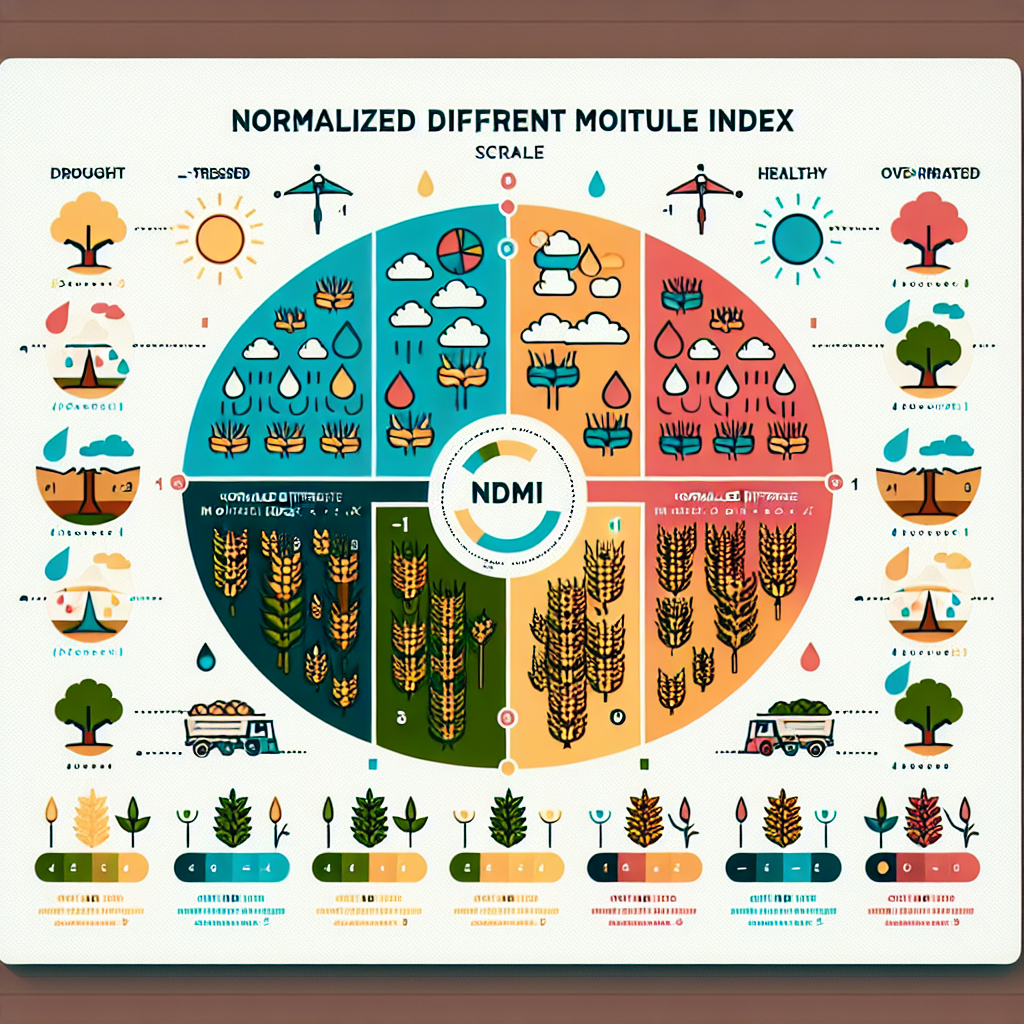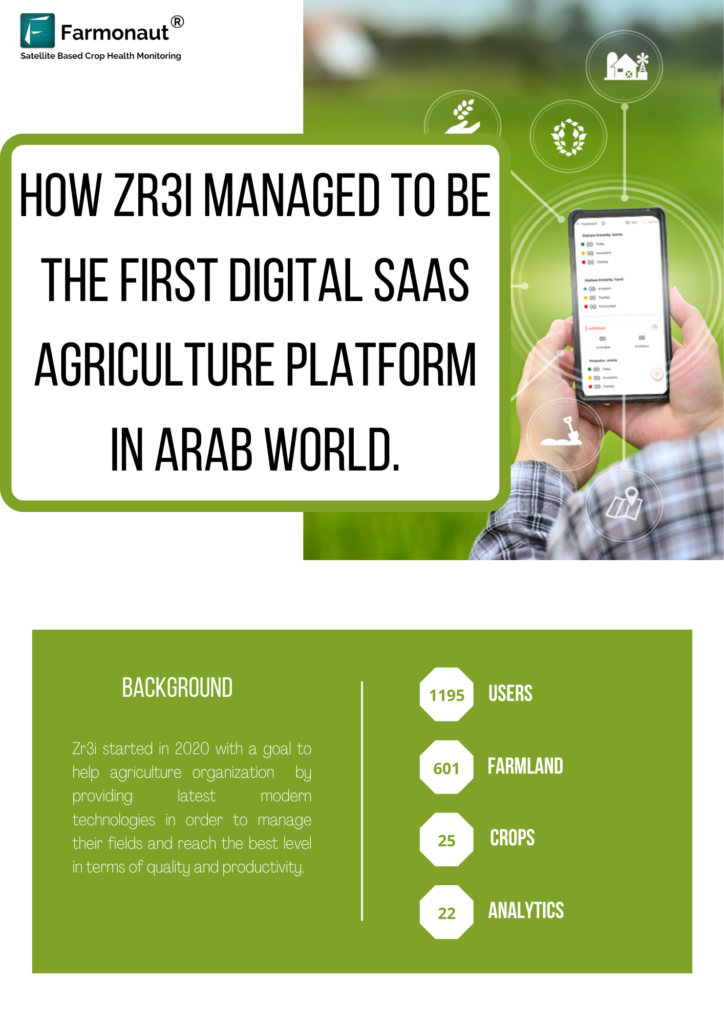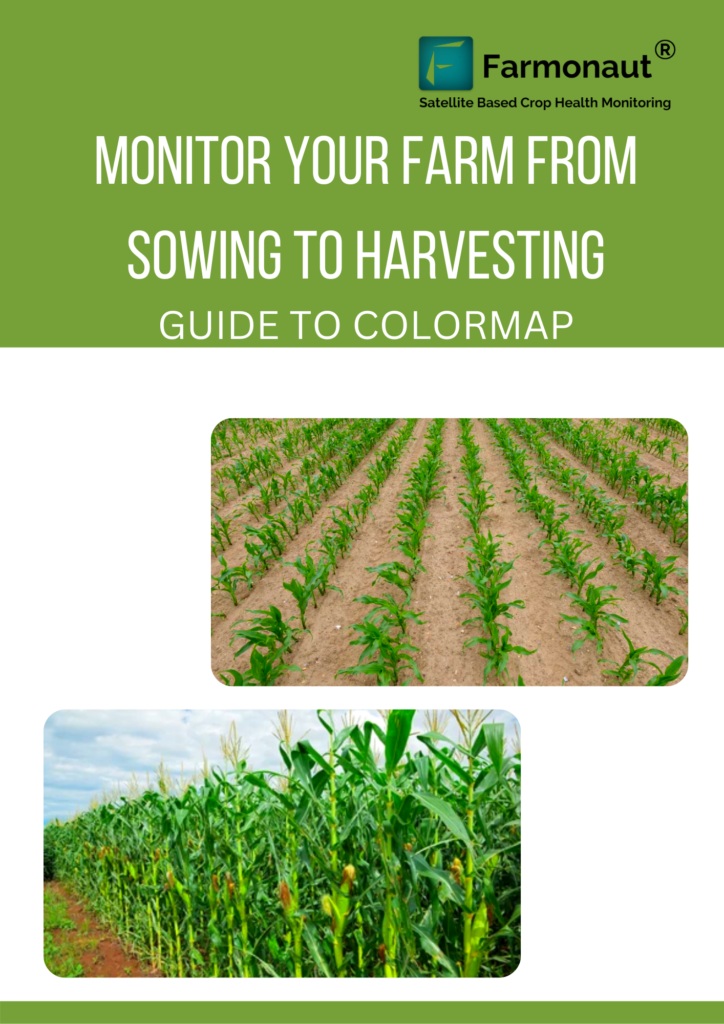Cropping Intensity in India 2023: Trends, Analysis, and Impact on Agriculture

As we delve into the agricultural landscape of India in 2023, one of the most crucial metrics that demands our attention is the cropping intensity. This comprehensive blog post will explore the cropping intensity of India in 2023, its implications for the agricultural sector, and how technological advancements are shaping the future of farming in the world’s second-most populous country.
Understanding Cropping Intensity
Before we dive into the specifics of the cropping intensity of India 2023, it’s essential to understand what this term means and why it’s significant for the agricultural sector.
Cropping intensity is a measure of land use efficiency in agriculture. It represents the ratio of gross cropped area to net sown area, expressed as a percentage. In simpler terms, it indicates how many times a piece of land is used for cultivation within a year. A higher cropping intensity suggests more efficient use of available agricultural land.
The Significance of Cropping Intensity
The importance of cropping intensity cannot be overstated, especially in a country like India, where agricultural land is under increasing pressure due to urbanization and population growth. Here are some key reasons why cropping intensity matters:
- Food Security: Higher cropping intensity can lead to increased food production, which is crucial for ensuring food security in a populous country like India.
- Economic Impact: Improved cropping intensity can boost farmers’ incomes and contribute to the overall agricultural GDP.
- Resource Efficiency: It reflects the efficient use of limited land resources, which is particularly important in a country where arable land is becoming scarce.
- Sustainability: When managed properly, increased cropping intensity can promote sustainable farming practices.
Cropping Intensity of India in 2023: An Overview
As we analyze the cropping intensity of India 2023, it’s important to note that this metric varies significantly across different regions of the country due to factors such as climate, soil conditions, irrigation facilities, and agricultural practices.
While comprehensive data for the entire year 2023 is still being compiled, preliminary reports and projections indicate a generally positive trend in India’s cropping intensity. Several factors have contributed to this trend:
- Improved Irrigation Facilities: The government’s focus on enhancing irrigation infrastructure has allowed farmers to cultivate more crops throughout the year.
- Adoption of Short-Duration Crop Varieties: The introduction and widespread adoption of short-duration crop varieties have enabled farmers to grow more crops in a single year.
- Climate-Resilient Farming Practices: The implementation of climate-smart agricultural techniques has helped farmers mitigate the impacts of unpredictable weather patterns.
- Technological Advancements: The integration of technologies like satellite-based crop monitoring has empowered farmers with real-time data for better decision-making.
Regional Variations in Cropping Intensity
The cropping intensity of India in 2023 shows significant regional variations. Let’s explore some of the key regions and their cropping intensity trends:
1. Punjab and Haryana
These northern states, often referred to as India’s breadbasket, continue to show high cropping intensity. With well-developed irrigation systems and a focus on wheat-rice rotation, these states maintain a cropping intensity of over 180%.
2. Uttar Pradesh
As India’s most populous state, Uttar Pradesh has shown improvements in cropping intensity, particularly in its western regions. The state’s average cropping intensity is estimated to be around 160% in 2023.
3. West Bengal
Known for its rice cultivation, West Bengal has maintained a high cropping intensity, often exceeding 170% due to favorable climatic conditions and well-managed irrigation systems.
4. Maharashtra
Despite facing challenges related to water scarcity, Maharashtra has shown resilience in maintaining its cropping intensity. The state’s average cropping intensity is estimated to be around 130% in 2023, with significant variations between regions.
5. Tamil Nadu
With its diverse agro-climatic zones, Tamil Nadu exhibits varied cropping intensity patterns. The state’s overall cropping intensity is estimated to be around 120% in 2023, with higher figures in well-irrigated delta regions.
Factors Influencing Cropping Intensity in India 2023
Several factors have played a crucial role in shaping the cropping intensity of India 2023. Understanding these factors is essential for policymakers, agricultural experts, and farmers to make informed decisions and implement effective strategies.
1. Irrigation Infrastructure
The availability and efficiency of irrigation systems continue to be a primary determinant of cropping intensity. In 2023, we’ve seen significant improvements in irrigation infrastructure across various states, contributing to higher cropping intensities.
- Micro-irrigation systems: The adoption of drip and sprinkler irrigation has allowed farmers to cultivate crops in water-scarce regions.
- Canal renovation: Many states have invested in renovating and maintaining canal networks, ensuring a more reliable water supply for agriculture.
- Rainwater harvesting: Increased focus on rainwater harvesting techniques has helped improve water availability for irrigation.
2. Climate Change and Weather Patterns
The impact of climate change on agriculture has been increasingly evident in recent years. In 2023, we’ve observed:
- Shifting monsoon patterns: Changes in the timing and intensity of monsoons have influenced cropping decisions and intensity.
- Extreme weather events: More frequent occurrences of droughts, floods, and heatwaves have affected cropping patterns in various regions.
- Adaptation strategies: Farmers have been adopting climate-resilient farming practices to maintain or improve cropping intensity despite climate challenges.
3. Technological Advancements
The integration of technology in agriculture has been a game-changer for cropping intensity. In 2023, we’ve seen widespread adoption of:
- Satellite-based crop monitoring: Companies like Farmonaut have revolutionized farm management by providing real-time insights into crop health and soil moisture.
- Precision agriculture: The use of GPS-guided machinery and variable rate technology has optimized resource use and improved yields.
- AI-powered advisory systems: Artificial intelligence is helping farmers make data-driven decisions about crop selection and management.
4. Government Policies and Initiatives
Government interventions have played a significant role in influencing the cropping intensity of India in 2023:
- Minimum Support Price (MSP): The government’s MSP policies have encouraged farmers to cultivate certain crops, affecting cropping patterns and intensity.
- Crop diversification programs: Initiatives promoting crop diversification have helped farmers move beyond traditional mono-cropping systems.
- Agricultural extension services: Enhanced agricultural extension services have provided farmers with knowledge and resources to improve cropping intensity.
5. Market Demand and Economic Factors
Economic considerations continue to influence farmers’ decisions regarding cropping intensity:
- Export opportunities: Increased demand for certain crops in international markets has encouraged farmers to intensify cultivation of those crops.
- Domestic consumption patterns: Changing food habits and increased demand for specific agricultural products have influenced cropping decisions.
- Input costs: Fluctuations in the prices of seeds, fertilizers, and other inputs have impacted farmers’ ability to increase cropping intensity.
The Role of Technology in Enhancing Cropping Intensity
As we analyze the cropping intensity of India 2023, it’s crucial to highlight the transformative role of technology in modern agriculture. At the forefront of this technological revolution is Farmonaut, a pioneering agricultural technology company that offers advanced, satellite-based farm management solutions.
Farmonaut’s Contribution to Improving Cropping Intensity
Farmonaut’s innovative platform provides valuable services that directly contribute to enhancing cropping intensity:
- Real-time Crop Health Monitoring: By leveraging multispectral satellite images, Farmonaut enables farmers to monitor crop health continuously. This real-time data helps in making informed decisions about irrigation, fertilizer usage, and pest management, ultimately optimizing crop yields and potentially increasing cropping intensity.
- AI-based Advisory System: Farmonaut’s Jeevn AI delivers personalized farm advisory, including real-time insights, weather forecasts, and expert crop management strategies. This AI-driven tool helps farmers make data-backed decisions on crop selection and management, potentially leading to increased cropping intensity.
- Resource Management Tools: Efficient resource management is key to increasing cropping intensity. Farmonaut’s platform offers tools for optimizing the use of water, fertilizers, and other inputs, allowing farmers to cultivate more crops with the same resources.
- Weather Forecasting: Accurate weather predictions are crucial for planning crop cycles. Farmonaut’s weather forecasting capabilities help farmers make informed decisions about planting and harvesting times, potentially enabling them to fit more crop cycles within a year.
To learn more about how Farmonaut can help improve your farm’s productivity and cropping intensity, visit Farmonaut’s App.
Comparison: Farmonaut Satellite System vs. Drone and IoT-based Farm Monitoring
| Feature | Farmonaut Satellite System | Drone-based Monitoring | IoT-based Monitoring |
|---|---|---|---|
| Coverage Area | Large scale (entire farms/regions) | Limited to flight path | Limited to sensor placement |
| Frequency of Data Collection | Regular (as per satellite pass) | On-demand (requires manual flight) | Continuous |
| Initial Setup Cost | Low | High (drone purchase) | High (sensors and network setup) |
| Operational Complexity | Low (automated) | High (requires trained operator) | Medium (maintenance required) |
| Data Analysis | Advanced AI-powered analysis | Requires separate analysis tools | Real-time but limited parameters |
| Scalability | Highly scalable | Limited by drone capabilities | Requires additional sensor deployment |
For developers interested in integrating Farmonaut’s powerful satellite and weather data into their own systems, check out the Farmonaut API and the API documentation.
Challenges in Improving Cropping Intensity
While the cropping intensity of India in 2023 shows positive trends, several challenges persist in further improving this crucial agricultural metric:
1. Water Scarcity
Despite improvements in irrigation infrastructure, water scarcity remains a significant challenge in many parts of India. Overexploitation of groundwater resources and irregular rainfall patterns pose threats to sustainable cropping intensity improvements.
2. Soil Health Degradation
Intensive farming practices, while increasing cropping intensity, can lead to soil degradation if not managed properly. Maintaining soil health is crucial for sustaining high cropping intensity in the long term.
3. Climate Change Impacts
The unpredictable nature of climate change poses significant challenges to maintaining and improving cropping intensity. Extreme weather events, shifting seasons, and new pest patterns require constant adaptation.
4. Access to Technology
While technological solutions like Farmonaut are revolutionizing agriculture, ensuring widespread access to these technologies, especially for small and marginal farmers, remains a challenge.
5. Market Volatility
Fluctuations in crop prices and input costs can influence farmers’ decisions regarding cropping intensity. Ensuring stable markets and fair prices is crucial for encouraging farmers to increase cropping intensity.
Future Outlook: Cropping Intensity Beyond 2023
As we look beyond the cropping intensity of India 2023, several trends and initiatives are likely to shape the future of this crucial agricultural metric:
1. Precision Agriculture
The continued adoption of precision agriculture techniques, powered by satellite technology and AI, is expected to play a significant role in optimizing cropping intensity. Farmonaut’s platform, for instance, is at the forefront of this revolution, providing farmers with data-driven insights to make informed decisions about crop management and resource allocation.
2. Climate-Resilient Farming
As climate change impacts become more pronounced, the focus on developing and implementing climate-resilient farming practices will intensify. This includes the adoption of drought-resistant crop varieties, improved water management techniques, and adaptive farming calendars.
3. Crop Diversification
Encouraging crop diversification will likely be a key strategy to improve cropping intensity while ensuring soil health and biodiversity. This approach can help mitigate risks associated with mono-cropping and respond to changing market demands.
4. Policy Support
Government policies and initiatives are expected to play a crucial role in supporting efforts to increase cropping intensity. This may include incentives for adopting water-efficient technologies, promoting sustainable farming practices, and supporting research in high-yielding, short-duration crop varieties.
5. Technological Integration
The integration of various technologies, including satellite monitoring, IoT devices, and blockchain for traceability, is expected to create a more connected and efficient agricultural ecosystem. This holistic approach can potentially lead to significant improvements in cropping intensity and overall farm productivity.
The Role of Farmonaut in Shaping India’s Agricultural Future
As we consider the future of cropping intensity in India, it’s important to highlight the pivotal role that companies like Farmonaut are playing in transforming the agricultural landscape. Farmonaut’s innovative approach to farm management is not just about improving current practices; it’s about reimagining the future of agriculture.
Farmonaut’s Vision for Indian Agriculture
Farmonaut’s mission to make precision agriculture affordable and accessible to farmers worldwide aligns perfectly with India’s goals of improving agricultural productivity and sustainability. Here’s how Farmonaut is contributing to this vision:
- Democratizing Access to Technology: By offering satellite-based monitoring at affordable prices, Farmonaut is ensuring that even small and marginal farmers can benefit from advanced agricultural technologies.
- Promoting Data-Driven Decision Making: The AI-powered insights provided by Farmonaut’s platform enable farmers to make informed decisions about crop management, potentially leading to increased cropping intensity and improved yields.
- Enhancing Resource Efficiency: Through precise monitoring of crop health and soil moisture, Farmonaut helps farmers optimize their use of water, fertilizers, and other inputs. This not only improves productivity but also promotes sustainable farming practices.
- Supporting Climate-Smart Agriculture: By providing real-time data and forecasts, Farmonaut enables farmers to adapt their practices to changing climate conditions, crucial for maintaining and improving cropping intensity in the face of climate change.
- Facilitating Financial Inclusion: Farmonaut’s partnerships with financial institutions for satellite-based verification of farms can improve farmers’ access to credit and insurance, providing the financial support needed to implement intensive cropping practices.
To experience the benefits of Farmonaut’s innovative platform, download the app for Android or iOS.
Conclusion: The Path Forward for Cropping Intensity in India
As we conclude our comprehensive analysis of the cropping intensity of India in 2023, it’s clear that while significant progress has been made, there’s still immense potential for improvement. The interplay of factors such as technological advancements, policy support, climate change adaptation, and innovative farming practices will continue to shape the trajectory of India’s cropping intensity in the coming years.
The role of technology, exemplified by platforms like Farmonaut, cannot be overstated. By providing farmers with real-time, data-driven insights, these technologies are empowering farmers to make informed decisions that can lead to increased cropping intensity, improved yields, and more sustainable farming practices.
As India strives to ensure food security for its growing population while facing the challenges of climate change and resource constraints, improving cropping intensity will remain a key focus area. The collaborative efforts of farmers, policymakers, researchers, and agritech companies will be crucial in realizing the full potential of India’s agricultural lands.
The journey towards optimizing cropping intensity is ongoing, and with continued innovation and support, India’s agricultural sector is well-positioned to meet the challenges of the future while ensuring sustainable growth and prosperity for its farming communities.
FAQs about Cropping Intensity in India 2023
- Q: What is cropping intensity?
A: Cropping intensity is the ratio of gross cropped area to net sown area, expressed as a percentage. It indicates how many times a piece of land is used for cultivation within a year. - Q: Why is cropping intensity important for India?
A: Cropping intensity is crucial for India as it reflects land use efficiency, contributes to food security, and impacts farmers’ incomes and overall agricultural productivity. - Q: What factors influence cropping intensity?
A: Key factors include irrigation availability, climate conditions, soil health, technological adoption, government policies, and market demand. - Q: How does technology like Farmonaut help improve cropping intensity?
A: Farmonaut’s satellite-based monitoring and AI-powered insights help farmers optimize resource use, make informed decisions, and potentially increase the number of crops grown per year. - Q: What are the main challenges in improving cropping intensity in India?
A: Major challenges include water scarcity, soil degradation, climate change impacts, limited access to technology for small farmers, and market volatility. - Q: How does cropping intensity vary across different regions of India?
A: Cropping intensity varies significantly across India due to differences in climate, irrigation facilities, and agricultural practices. States like Punjab and Haryana generally have higher cropping intensities compared to arid regions. - Q: What role do government policies play in influencing cropping intensity?
A: Government policies on irrigation, crop insurance, minimum support prices, and agricultural subsidies can significantly influence farmers’ decisions regarding cropping patterns and intensity. - Q: How is climate change affecting cropping intensity in India?
A: Climate change is impacting cropping intensity through altered rainfall patterns, increased frequency of extreme weather events, and shifting growing seasons, necessitating adaptive farming practices. - Q: Can increasing cropping intensity lead to soil degradation?
A: Yes, if not managed properly, intensive cropping can lead to soil degradation. Sustainable farming practices and proper crop rotation are essential to maintain soil health while increasing intensity. - Q: How can farmers access technologies like Farmonaut to improve their cropping intensity?
A: Farmers can access Farmonaut’s services through their mobile app, available for both Android and iOS devices. The platform offers various subscription plans to suit different farm sizes and needs.
Subscribe to Farmonaut
Ready to revolutionize your farming practices and potentially improve your cropping intensity? Subscribe to Farmonaut’s advanced satellite-based farm management platform:
By subscribing to Farmonaut, you’re not just getting access to cutting-edge agricultural technology; you’re investing in the future of your farm and contributing to the advancement of India’s agricultural sector.

As we continue to monitor and analyze the cropping intensity of India in 2023 and beyond, it’s clear that the integration of technology, sustainable practices, and data-driven decision-making will play a crucial role in shaping the future of Indian agriculture. With platforms like Farmonaut leading the way, Indian farmers are well-equipped to face the challenges ahead and contribute to a more productive and sustainable agricultural sector.













